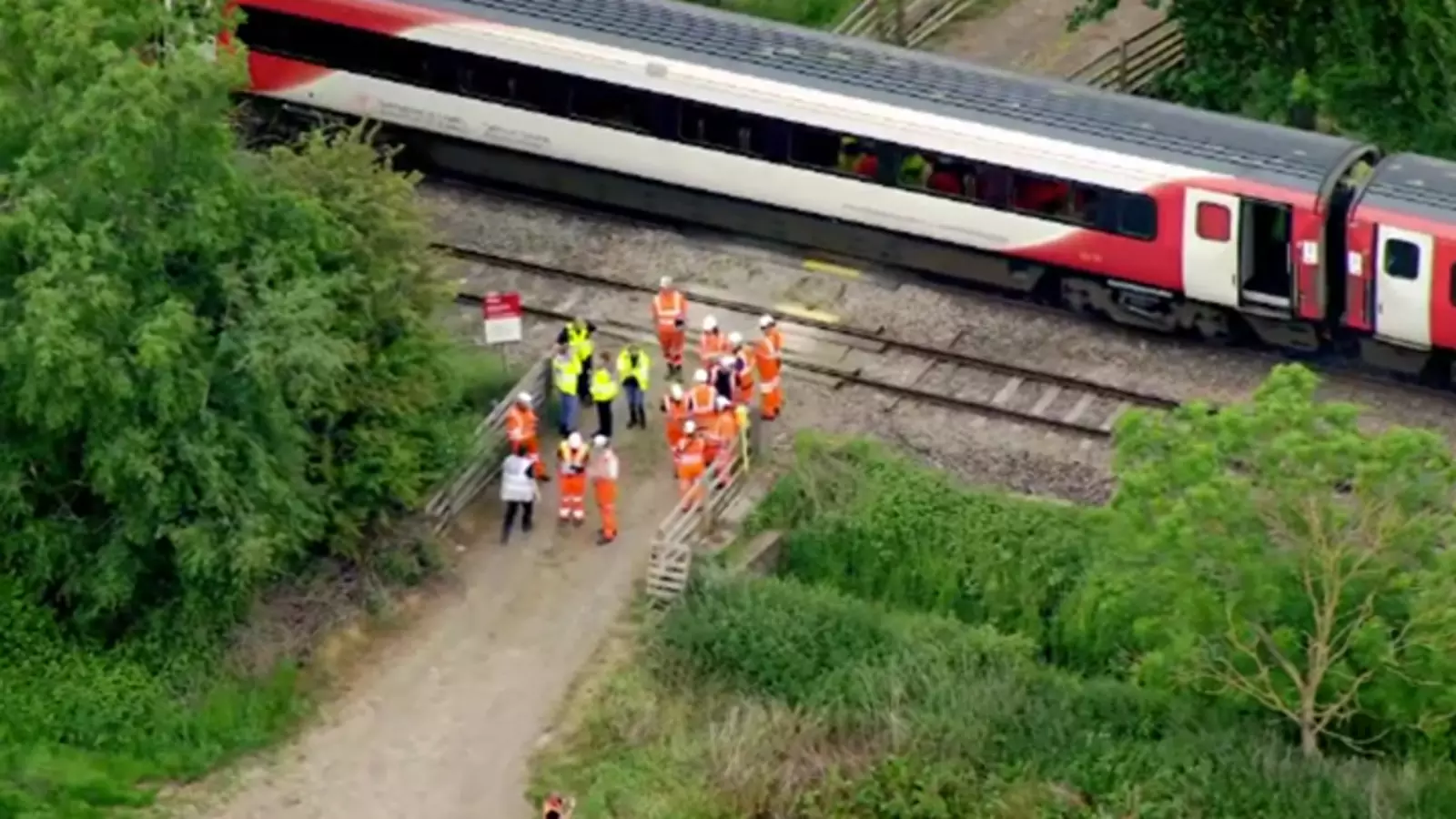In a shocking turn of events, more than a dozen individuals were injured when a train collided with an agricultural trailer at a level crossing in Herefordshire. This incident, which occurred at 10:40 AM north of Leominster, sheds light on the disastrous consequences of negligence in rail safety — a lapse that continues to plague our transport systems. Air ambulance services were deployed to rush injured individuals to the hospital, highlighting the severe implications of what many might dismiss as mere accidents.
The Human Cost of Complacency
Among the injured was a 32-year-old man who was airlifted to a hospital for treatment, while a woman accompanied him, also suffering injuries that, while not life-threatening, remind us of the unpredictable nature of such collisions. The involvement of 15 other train passengers, although treated and discharged at the scene, raises significant questions about the safety protocols in place when railway tracks intersect with agricultural livelihoods. This situation is not just about the injuries sustained; it is emblematic of a systemic issue that demands urgent attention.
A Systematic Failure or Individual Negligence?
British Transport Police swiftly placed a 32-year-old local man under arrest on suspicion of endangering safety on the railway. This action invites a deeper inquiry into accountability — a recurring theme in rail accidents. Was there a reckless disregard for safety, or does this incident signify deeper flaws in the operation of user-worked level crossings? Such crossings, which require manual operation by an individual, lay bare the vulnerabilities inherent in our rail system. Who is ultimately responsible when human error mixes with infrastructural issues?
The Broader Implications for Rail Safety
The Rail Accident Investigation Branch (RAIB) was quick to deploy inspectors to the site, but it is disheartening that it takes such tragedies for the system to react. With lines blocked between Hereford and Craven Arms as a result of the collision, the ripple effect on transport schedules cannot be ignored. Replacement transport services may be implemented, but for many, this will not merely be an inconvenience; it may spell disruption in their daily lives and commitments.
In a world where public safety is paramount, the prohibition of effective measures against incidents like these is alarming. Shouldn’t we prioritize our investments in robust safety systems over the rapidly increasing profits in the rail industry? Ensuring safety at crossings is non-negotiable, and the continuing occurrence of such incidents implies a glaring lack of urgency from both governing bodies and railway companies to act in the best interests of the public.
While today’s incident in Herefordshire is tragic, we must view it as a clarion call for reform. As citizens and stakeholders, we cannot sit idly by while regulatory bodies fail to uphold the safety standards they profess. The time has come for a complete audit of how we manage our level crossings, prioritizing safety above convenience, and assigning accountability where it rightfully belongs.


Leave a Reply